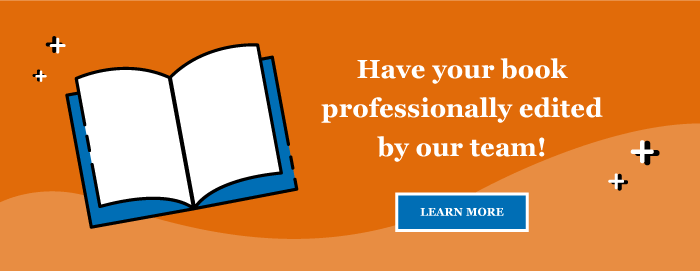Writers and aspiring writers are full of ideas, knowledge, and creativity and have the gift of telling an engaging tale, crafting a compelling sentence, or making a powerful argument. That does not necessarily mean that an author has a knack for formatting and presentation, which are entirely different skill sets.
Some budding writers even end up delaying their publishing dreams because they are so intimidated by the formatting step of the process. While it is understandable to be wary if you lack formatting knowledge, if you have the fortitude to write a book, it is more than possible for you to learn how to format your book for publishing.
Do You Even Need To Format a Book Before Submitting?
Perhaps you haven’t even considered formatting rules because you assumed a publisher would handle the formatting. If you work with a major publishing house, this may be a reasonable assumption. Nevertheless, you will want to present your work appropriately to make a good impression when submitting a book for publication.
Furthermore, self-publishing an eBook has even more stringent rules. Ultimately, to publish a readable eBook, formatting requirements must be met. That said, you can always get professionals like the team at Gatekeeper Press to handle advanced editing and formatting services for you if you would like to avoid doing it yourself.
Essential Book Formatting Tips for Publishing
Whether you decide to pursue the traditional publishing route or self-publishing there are certain industry practices that are expected when creating your manuscript. These are the standard nuts and bolts specifications in the publishing world:
- Set your margin. When using Microsoft Word for your word processing, you will find that the document defaults to a 1-inch margin — which is what you want. If you are importing your manuscript from a different type of processor, you may have to manually set all margins to 1 inch.
- Use a standard font and size. The font of choice for book manuscripts is Times New Roman, in black and 12-point size.
- Align left-justified. Be sure to set your document to left-justified, which aligns the text to the left side, leaving a ragged edge on the right.
- Double space. Set your document to double spaced line spacing.
- One space after periods. Only type one space after a period. This takes some practice if you learned to type a while ago, but it is a must.
- Set the indent. The industry standard for a paragraph indent is .5 inch. Exceptions for indented paragraphs include the first paragraph in a chapter and text that follows a subheader within a chapter. Set the indentation using the Format > Paragraph tabs.
- Use page breaks. When starting a new chapter, instead of hitting the return button over and over to reach a new page, use page breaks at the end of the chapter. Go to Insert > Break > Page Break to begin the new chapter.
7 Ways To Format a Book for Publishing
There is no “formatting police” that enforces stringent rules for book manuscript formatting. However, there are certain book format conventions that writers should follow. And, as in the case of eBooks, sometimes there are strict formatting guidelines that you must adhere to successfully self-publish. Here are some of the most common book formats for you to be aware of.
1. Novel Format
A novel is probably the easiest print book to format. Typically, a novel is broken into chapters and paragraphs. In this case, formatting chapters for most word processing programs require that you begin on a new page. In addition to the novel format, each paragraph usually starts with a half-inch indentation.
- Set your margins to 1 inch; set indent to .5 inch
- Align text left-justified
- Use Times New Roman font, black, size 12-point
- Set headers and footers
- Begin the chapter about one-third of the way down the page, then add four spaces (hit return twice) to begin writing
- You can break chapters into sections using a graphic element that indicates a change of scene or time period. The first sentence after the graphic is not indented
2. Non-Fiction Manuscript Format
Typically, non-fiction books follow the same loose formatting. For example, you don’t necessarily need to indent your paragraphs. However, you will want to provide your reader with descriptive chapter titles that enable them to know what to expect from the chapter.
For non-fiction topics, you will also often need to employ footnotes and a bibliography. In this case, software programs like Microsoft Word make it fairly easy to format these. Additionally, a table of contents before the prologue is needed.
- Provide space for integrating footnotes if you plan to place them on the page
- Begin page numbering on page one of the content, not numbering the front matter
- If you do not indent paragraphs, be sure to provide a full paragraph break
- If your non-fiction book contains multiple graphs and tables, consider using Adobe InDesign to format the book
3. eBook Format
If you are planning to publish an eBook, you will need to follow specifications involving preferred fonts, styles, headings and subheadings, page breaks, etc. eBook formats are standardized, but they do vary depending upon which publisher you are using, so you will need to consult their particular formatting guidelines.
4. Children’s Book Format
Anyone who has ever read a children’s book might laugh at the very thought of a manuscript format for kids’ books — particularly when it comes to the larger picture books, where words may appear in an array of sizes and fonts, and be placed willy-nilly across the pages. Nevertheless, this is a crucial first step in publishing a children’s book.
The uniqueness and creativity of kids’ books make it all the more important for a writer to be able to convey to the editor or publisher what it should look like on the page. This means that a children’s book author must collaborate with an artist or graphic designer as part of the development process — unless of course you already are an artist yourself! Together you can work to design a page-by-page format that lays out the text and the visuals.
5. Playscript
There are two main formats for plays. The “script” format, or playwright format, is utilized by producers, directors, and actors. This format, which takes up a lot of space on the page, involves centering the characters’ names and dialogue on the page.
However, published plays are more practical and formatted to save space. Typically, the character names appear on the left-hand side of the pages. In this case, if you intend to publish the script, the reserved format may be your best option.
- Cast of characters is capitalized and centered
- Center the act header and then below it the scene header
- Center and capitalize the character’s name above dialogue
- Dialogue and settings are left-justified
- Action (blocking) is indented and double-spaced
6. Textbook
Textbook formatting can have some similarities with non-fiction book formatting, but textbooks tend to be larger and more textually dynamic, often with many pictures and graphics. A publishing house will hire authors directly to work on textbooks, so formatting guidance (which would also likely be done in collaboration with a designer) would be provided by them.
7. Coffee Table Book
Coffee table books are large-format books, often filled with beautiful photos, artwork, illustrations, maps, or other visual components. If you are a photographer or artist — or have a compelling book idea — you may seek out a collaborator to work with. In this case, formatting a picture-heavy book requires great external knowledge of image editing software.
Helpful Book Formatting Resources
For more detailed guidance and information on how to format a book for publishing, check out these great resources online:
- The Write Life provides this succinct but information-packed list of How to Format a Book, where you can get tips on margins, spacing, page breaks, indentation, and more.
- DIY Book Formats gets into the nitty-gritty of book sizes and fonts.
- Writing-World.com has a helpful DIY Publishing section that links to a variety of book format guides.
- The Best Book Writing Software guide reveals the best software programs for authors and explains how they help with formatting.
- Scrivener is not only a helpful software tool for organizing your book concepts and ideas, data, and chapters, but it also has features for formatting a book for publishing.
- Adobe InDesign is an excellent tool for formatting photography books, cookbooks, children’s books, or any type of book that has an abundance of creative content. It offers users many book design templates to help you get started.
- For DIY formatting, learning how to format a book for publishing can be greatly assisted by using the Vellum software program.
Keep Your Ideas Organized With Great Formatting!
Transform your manuscript into a well-formatted book! Learning how to format a book for publishing is easy, but doing the formatting may take some time. Use these resources and information to format your book and prepare it for its debut.
Additionally, take advantage of the great resources provided by Gatekeeper Press. Gatekeeper Press is a full-service publishing house that distributes high-quality digital and print books.
Also, Gatekeeper Press offers a plethora of services for indie authors including editing, formatting, layout, illustrations, book cover design, and much more. If you are unsure of the formatting or want to spare yourself the hassle, contact Gatekeeper Press. Call 866-535-0913 or schedule a free consultation online with a publishing professional.


